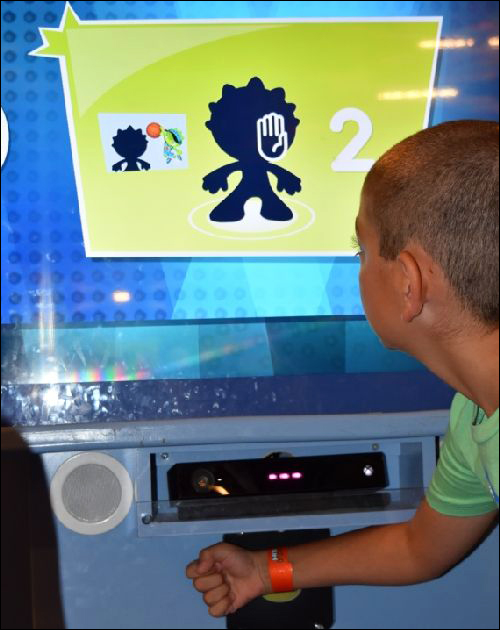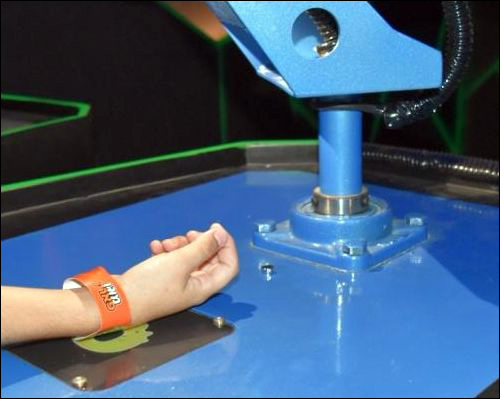Sep 13, 2016Breeze Creative has developed Near Field Communication (NFC)-based technology for an Israel-based digital-entertainment park that enables visiting children and teens to operate the approximately 20 interactive games that the complex provides. At Mogo Park (part of the Oshiland shopping mall operated by Israeli real-estate firm Oshira), players wear a wristband, provided by RFID technology company Tadbik, that not only launches games, but also collects game scores, photographs and videos.
Breeze Creative is a design, development and production company that provides experiences for museums and other facilities with interactive exhibits and content.
Mogo Park, located in Kfar Sava, is a mall-based entertainment complex where children can play while their parents shop. The park is built around the Mogobe online game, in which children create virtual worlds by building houses, accumulating and spending coins, and going on adventures. At Mogo Park, players can take the game one step further by interacting with kiosks and screens allowing them to participate in challenges, such as firing balls at a target. Players can earn points that can be converted to digital coins that they can then use in the online game after they leave.
"We wanted to give the visitors a personalized experience similar to the one they have in the Mogobe website," says Sagi Yehezkel, Breeze Creative's CEO. The company worked with Tadbik to develop a system that identifies each user and saves his or her data while that individual is visiting Mogo Park. The guest can then access that content, such as scores earned, as well as images and videos, at kiosks at the end of the visit.
The park consists of game kiosks and screens, using a variety of technologies to allow the children to interact with them. The challenge, Yehezkel reports, was in providing a uniform way for kids to access those games, as well as their scores, images and other game content. "All these applications had to be integrated with the RFID system," he explains.
Therefore, a visitor's game scores and related content are fed to the Breeze Creative software, which links that data with the unique ID number encoded to the NFC RFID tag embedded in that person's wristband. Adi Kremer, Tadbik's RFID marketing manager, says her company created a special band that would fit the small arm of a child, yet accommodate an RFID inlay large enough to be read well via the readers. To accomplish this goal, he says, Tadbik designed a die-cut tool that allowed the firm to produce the bracelets, and then fit the antenna within the band layers. The tool also allowed additional space on the band for a printed coupon that guests could use at one of the park's main attractions: the Oshiland slide.
Upon first arriving at Mogo Park, a child receives a wristband. The unique ID number encoded to that band's RFID inlay is stored on the Mogobe website, along with the child's user name. The bracelet features a Smartrac BullsEye 13.56 MHz NFC RFID inlay made with an NXP Semiconductors NTAG213 chip. Promag ER750 readers capture each wristband's tag ID. The park processes approximately 1,000 users daily, and Breeze Creative has used 40,000 bands to date.
Within the park, a total of 25 readers are installed at games. To play a game, a child taps his wristband against the NFC reader. The reader captures the bracelet's unique ID, then forwards that data to the Mogo Park software, while also displaying a personalized message on the screen, such as "Hello, Jonathan."

The child then begins playing the game, and the points he earns are captured and linked to his account in Mogo Park's software. Once the game ends, the score is updated in that account. If images or videos are taken of the child at some games, those are also stored and linked to his account ID.
Players can access their data at dedicated kiosk readers at the end of the park experience, Yehezkel says. They can purchase the information onsite, or the data will be deleted after 24 hours.
Finally, children can take the wristband home with them. When they later visit the Mogobe website, they can input the bracelet's ID in order to access an online game in which they can win digital coins that they can use to buy virtual items in that game.
Breeze Creative also intends to create an app that parents could use to receive updates regarding their child's activities at Mogo Park. The app will display a kid's game activity and scores, or allow parents to view photos taken of their child at the park. This app is expected to be available later this year, Yehezkel predicts.
"Mogo Park is a child's territory," Yehezkel says. "We didn't have any problem with the adoption of the technology. Kids understood it right away, and parents let their kids have fun at the park."




